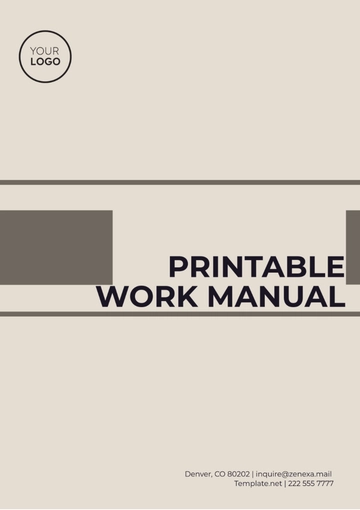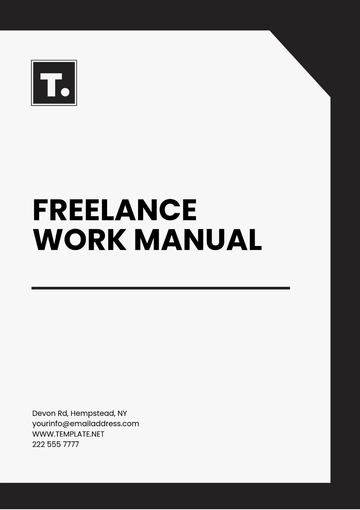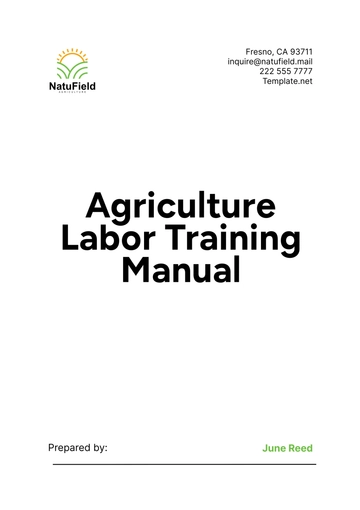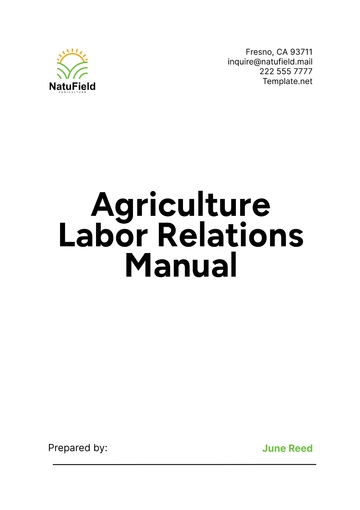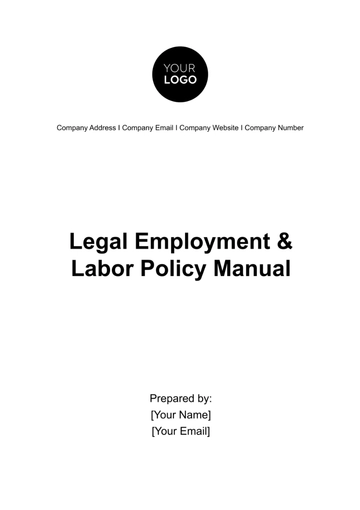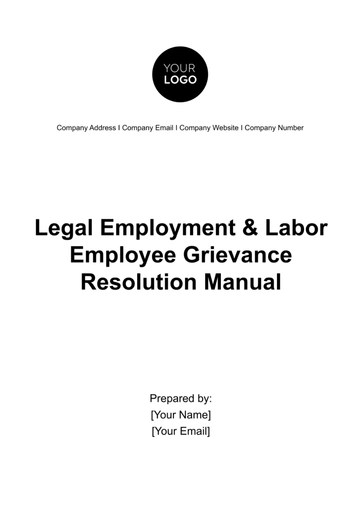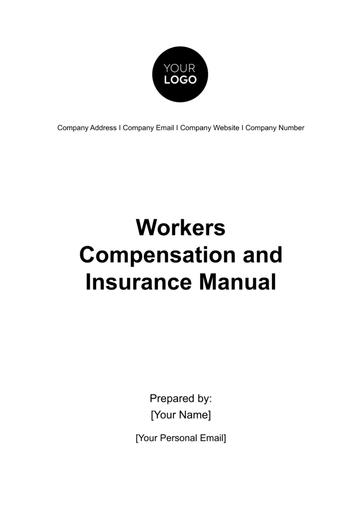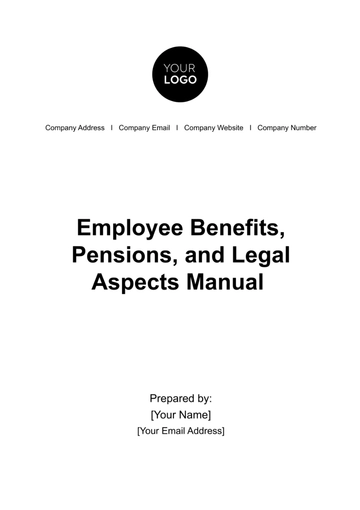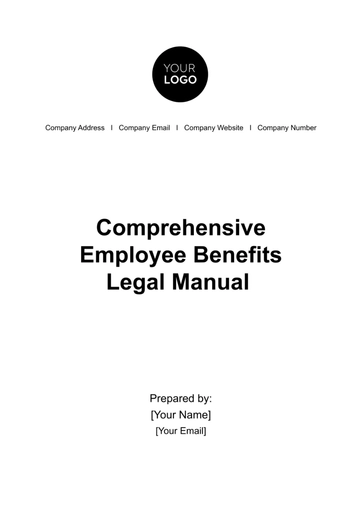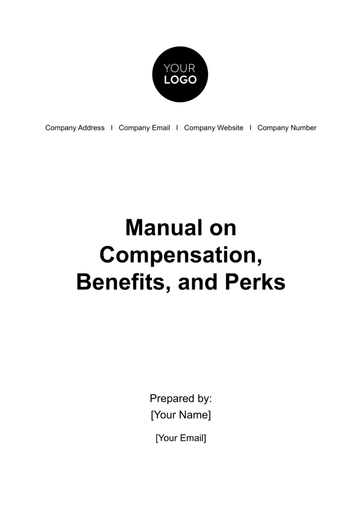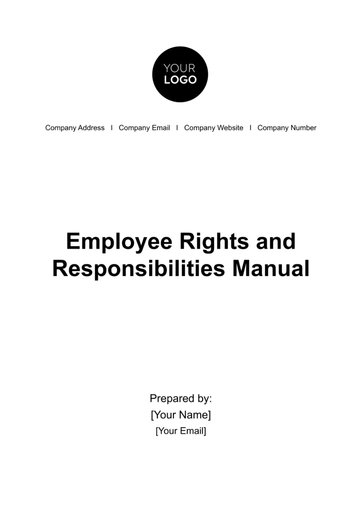Free Legal Employment & Labor Policy Manual
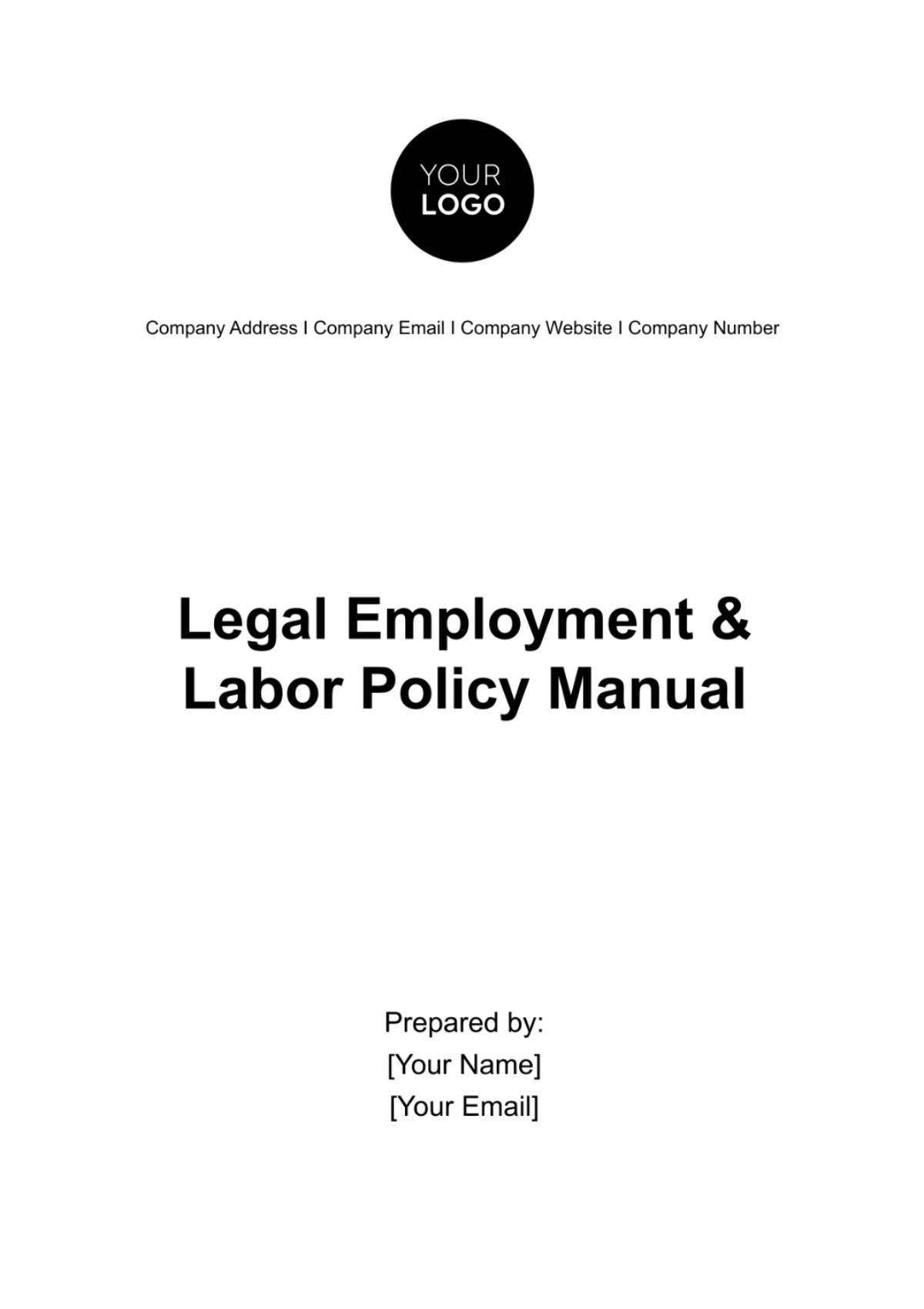
A. Introduction
At [Your Company Name], we recognize that our employees are our most valuable asset and the key to our success. The policies, procedures, and guidelines outlined in this Employment & Labor Policy Manual are crafted with the intention of supporting our workforce, fostering professional growth, and ensuring legal compliance across all levels of the organization. By establishing clear expectations and providing a framework for behavior and operations, we aim to create an environment that not only values but also enhances the contributions of each employee.
This manual serves as a vital tool in navigating the day-to-day and strategic aspects of your employment, offering clarity and direction on the company's standards and expectations. It is designed to be comprehensive, covering a wide range of topics relevant to your employment experience at [Your Company Name]. We encourage you to familiarize yourself with its contents and use it as a reference throughout your tenure with us. Our commitment to maintaining an open, inclusive, and respectful workplace is reflected in the policies and practices described herein. We believe that by working together, adhering to these guidelines, and upholding our company values, we can achieve our collective goals and continue to build a strong, vibrant, and sustainable future for [Your Company Name].
Purpose of the Manual:
The primary aim of this Employment & Labor Policy Manual is to outline the guiding principles, policies, and procedures that govern the working relationship between [Your Company Name] and its employees. This manual serves as a comprehensive resource for understanding the expectations and responsibilities of both the employer and the employees. It is designed to:
Ensure a clear understanding of workplace expectations and standards.
Promote fairness and consistency in the treatment of all employees.
Provide a basis for training and onboarding new employees.
Serve as a reference for resolving employment-related questions and issues.
Foster a positive and productive work environment that supports the company's mission and business objectives.
Scope and Applicability:
This manual applies to all individuals working for [Your Company Name], encompassing full-time, part-time, temporary employees, and interns, across all departments and locations. The policies and procedures outlined within this document are applicable universally within the company, regardless of position or rank, ensuring a cohesive and uniform standard of conduct and operation. Contractors and consultants may be governed by separate agreements, although they are expected to adhere to relevant aspects of this manual during their engagement with the company.
Legal Compliance Statement:
[Your Company Name] is committed to operating with the highest standards of ethics and compliance with all applicable employment laws and regulations. This manual has been developed with the intention of ensuring that all employment practices are not only fair but also legally compliant. The company pledges to:
Regularly review and update employment practices to align with changes in legislation.
Train management and HR staff on laws and regulations affecting employment practices.
Encourage an environment where employees can raise concerns about compliance issues without fear of retaliation.
Conduct internal audits to ensure ongoing compliance with these laws and regulations.
Amendment and Update Policy:
The employment landscape, including laws, regulations, and company operations, is subject to change. As such, [Your Company Name] reserves the right to amend, revoke, or add to the provisions of this manual at any time without prior notice to employees. Amendments will be effective immediately upon approval by the company's senior management, unless otherwise stated.
Notification of Changes: Employees will be notified of significant changes to the manual through company-wide communications, such as email announcements or meetings.
Effective Date: The date of the latest update will be clearly documented at the beginning of the manual.
Access to Updated Policies: Updated versions of the manual will be made accessible to all employees. Employees are responsible for reviewing the updated policies and adhering to them.
Feedback and Suggestions: [Your Company Name] encourages feedback and suggestions from employees regarding the manual's content. This collaborative approach ensures that the manual remains relevant and valuable as a resource.
B. Employment Policies
1. Equal Employment Opportunity
[Your Company Name] is an Equal Opportunity Employer. We do not discriminate based on race, color, religion, sex, national origin, age, disability, veteran status, sexual orientation, gender identity, or any other characteristic protected by law.
Methods | Details |
|---|---|
Anti-Harassment Policy | We are committed to creating a work environment free of harassment. Any form of harassment related to an individual's race, color, religion, gender, sexual orientation, gender identity, national origin, age, disability, or any other characteristic is strictly prohibited. |
Complaint Procedure | Employees are encouraged to report any incidents of discrimination or harassment. Reports can be made to a supervisor or directly to the HR department without fear of retaliation. |
2. Recruitment and Hiring
Our recruitment process is designed to be fair, transparent, and consistent. We aim to attract, hire, and retain the best talent.
Methods | Details |
|---|---|
Job Postings | Open positions are posted internally and, when necessary, externally. Job postings include position requirements, responsibilities, and how to apply. |
Application Process | Candidates can apply through our HR department or the designated online platform. Each application is reviewed, and candidates are selected based on their qualifications and the job requirements. |
3. Employment Classifications
Employees at [Your Company Name] are classified according to the nature of their employment:
Full-Time Employees: Regularly work a standard workweek of [specify hours].
Part-Time Employees: Work less than the full-time hours.
Temporary Employees: Hired for a specific period or project.
Contractors: Engaged under a contract for services.
Interns: Engage in temporary work to gain professional experience.
4. Compensation and Benefits
Salary Structure: Salaries are determined by the position, experience, and market standards. Salary reviews occur annually.
Benefits Overview: Eligible employees receive benefits including health insurance, retirement plans, and paid time off. Specific benefits are detailed in the employee handbook.
5. Work Hours and Attendance
Standard Work Hours: Our standard workweek is from Monday to Friday, [0:00] AM to [0:00] PM. Flexibility in scheduling is provided where possible.
Attendance Expectations: Employees are expected to adhere to their scheduled work hours. Absences must be reported to the immediate supervisor in advance, when possible.
6. Employee Conduct and Work Rules
Code of Ethics:
At [Your Company Name], we pride ourselves on maintaining a high standard of ethics and integrity in all aspects of our business operations. The Code of Ethics serves as a guideline for professional conduct and decision-making, ensuring that all employees act in a manner that upholds the company's reputation and values. This includes, but is not limited to, honesty in communications, respect for the rights and dignity of others, accountability for actions, and stewardship of company resources.
Substance Abuse Policy:
The safety and well-being of our employees are of utmost importance at [Your Company Name]. Substance abuse in the workplace not only jeopardizes the safety of the individual but also poses a significant risk to colleagues and the overall operation of the business. Therefore, the company strictly prohibits the use, possession, distribution, or sale of illegal drugs, alcohol, or prescription medication without a valid prescription on company premises or while performing company duties.
Support for Affected Employees:
[Your Company Name] is committed to providing support to employees struggling with substance abuse issues. We understand that addiction is a complex condition that may require professional help and support. Employees dealing with substance abuse are encouraged to seek assistance through the company's Employee Assistance Program (EAP), which offers confidential counseling and referral services. The company aims to create an environment where employees feel safe to seek help without fear of judgment or retaliation.
7. Performance Evaluation and Management
Performance Review Process:
At [Your Company Name], we believe that continuous feedback and development are key to both individual and organizational success. Therefore, our performance review process is designed to be comprehensive, constructive, and aligned with our core values and business objectives. Employees receive annual performance reviews, which are a critical component of our performance management strategy. These reviews are aimed at assessing performance against established goals, identifying areas for improvement, setting new objectives, and facilitating career development.
Additionally, [Your Company Name] recognizes the importance of ongoing feedback and support beyond the annual review cycle. Managers are encouraged to provide regular feedback to their team members, addressing both accomplishments and areas for improvement in a timely manner. This ongoing dialogue supports continuous learning and development, ensuring employees are engaged, motivated, and equipped to meet their professional goals.
8. Workplace Safety and Health
Emergency Procedures and Evacuation Plans:
At [Your Company Name], the safety and well-being of our employees are of paramount importance. Recognizing that emergencies can occur without warning, we have established comprehensive emergency procedures and evacuation plans to ensure the safety of all personnel. These plans are designed to address various types of emergencies, including but not limited to fires, natural disasters, medical emergencies, and threats to personal safety.
Methods | Details |
|---|---|
Preparation and Training | To prepare for potential emergencies, all employees undergo regular safety training sessions. These sessions cover emergency response protocols, use of safety equipment, and evacuation procedures. |
Evacuation Plans | Evacuation routes and exits are clearly marked throughout our facilities. Evacuation plans are prominently displayed in all work areas, and employees are familiarized with these plans during their onboarding process and through ongoing training initiatives. |
Emergency Response Teams | [Your Company Name] has established in-house emergency response teams comprised of employees who have received additional training in first aid, fire suppression, and emergency coordination. |
Communication During Emergencies | Effective communication is critical during any emergency. [Your Company Name] utilizes a multi-channel communication system, including alarms, public address systems, and electronic notifications, to provide timely and accurate information to employees. |
Post-Emergency Support and Debriefing | Following an emergency, a debriefing session is conducted to evaluate the effectiveness of the response and to provide support to employees affected by the incident. Feedback gathered during these sessions is used to improve emergency plans and procedures. |
Maintenance and Inspection of Safety Equipment | Regular maintenance and inspection of safety equipment, such as fire extinguishers, smoke detectors, and emergency lighting, are conducted to ensure they are in good working order. Deficiencies are addressed promptly to maintain a safe work environment. |
9. Use of Company Property
Internet and Email Use:
At [Your Company Name], we provide internet and email resources to facilitate the effective execution of job responsibilities and to enhance operational efficiency. While these tools are essential for our daily operations, it is crucial that they are used responsibly and professionally. Inappropriate use not only disrupts business activities but can also expose the company to legal and security risks.
Guidelines for Appropriate Use:
Employees are expected to use the internet and email in a manner that is ethical, respectful, and in line with company objectives. This includes avoiding the use of company resources for browsing non-work-related websites, engaging in social media activities that are not part of job duties, or sending messages that could be construed as offensive, harassing, or discriminatory.
10. Leave and Time Off
Vacation Leave:
Recognizing the importance of work-life balance, [Your Company Name] is committed to providing employees with paid vacation time to rest, rejuvenate, and spend time with family and friends. Full-time employees are eligible for [number] days of paid vacation per year, accruing at a rate determined by their tenure with the company. This benefit is designed to support the well-being of our employees while ensuring that business operations continue smoothly.
Vacation Scheduling and Approval Process:
To facilitate effective planning and maintain operational efficiency, employees are encouraged to submit vacation requests as early as possible. Requests should be made through the designated HR system or to their direct supervisor for approval. While we strive to accommodate all vacation requests, approval will be based on departmental staffing needs and the timing of the requested leave. Employees are advised to coordinate with their team and supervisor to minimize the impact on work projects.
Carry-Over and Payout of Unused Vacation Days:
[Your Company Name] understands that circumstances may prevent employees from utilizing all their accrued vacation time within a calendar year. In such cases, the company allows a portion of unused vacation days to be carried over into the next year, subject to certain limits. Details regarding carry-over limits and any potential payout for unused vacation days are outlined in the employee handbook.
C. Termination of Employment
The termination of employment is a significant aspect of the employment lifecycle that [Your Company Name] handles with the utmost professionalism, fairness, and respect for all individuals involved. This section outlines the policies and procedures related to the termination of employment, whether initiated by the employee (resignation) or the employer (termination for cause, layoff, etc.).
1. Resignation Procedures
Employees considering resignation are encouraged to discuss their intentions with their direct supervisor or the HR department as early as possible. This allows the company to understand the reasons behind the decision and, if possible, address any concerns.
Procedures | Details |
|---|---|
Notice Period | Employees are required to provide a minimum written notice of [specify number] weeks to allow for a smooth transition of responsibilities. Executives and senior management roles may be subject to a longer notice period, as specified in their employment contracts. |
Resignation Letter | A formal resignation letter should be submitted, detailing the employee's last working day and reasons for leaving, if the employee chooses to disclose them. |
Handover Process | Employees are expected to cooperate in the handover of ongoing tasks, projects, and any company property in their possession. The HR department will provide a checklist to ensure a comprehensive handover. |
2. Termination Procedures
Termination of employment at [Your Company Name] can occur under several circumstances, including but not limited to redundancy, performance issues, or misconduct. The company is committed to ensuring that all termination procedures are conducted lawfully, ethically, and with sensitivity.
Procedures | Details |
|---|---|
Performance-Related Termination | Before termination for performance reasons, employees will typically receive performance reviews, warnings, and opportunities for improvement, as outlined in the Performance Evaluation and Management section. |
Conduct-Related Termination | Termination for misconduct will follow a thorough investigation process. Employees will have the opportunity to present their side of the story before any decision is made. |
Redundancy | In cases of redundancy, the company will adhere to legal requirements regarding notice periods, severance pay, and support for affected employees, including outplacement services where applicable. |
Termination Meeting | A formal meeting will be arranged to discuss the termination, including the reasons for the decision and the terms of separation. This meeting will be conducted with respect and confidentiality. |
3. Exit Interviews
The HR department may conduct exit interviews with departing employees to gain insights into their work experience at [Your Company Name]. Participation is voluntary but encouraged, as feedback is invaluable for improving workplace culture and employee satisfaction.
Purpose:
To understand the employee's reasons for leaving, gather feedback on the work environment, management, and company policies, and identify areas for improvement.
Confidentiality:
Responses from exit interviews are treated with confidentiality and used solely for the purpose of enhancing the work experience for current and future employees.
4. Return of Company Property
Upon termination of employment, all company property must be returned, including but not limited to electronic devices, access cards, files, and documents. Failure to return company property may result in legal action or the withholding of final paychecks until compliance is achieved.
Checklist:
The HR department will provide a checklist of items to be returned and assist with the process to ensure it is completed efficiently.
5. Final Paycheck and Benefits
The final paycheck will include compensation for all worked hours up to the termination date, accrued vacation pay (if applicable), and any other entitlements in accordance with company policy and applicable law.
Severance Pay:
If applicable, severance pay will be calculated based on the employee's tenure and position, in accordance with company policy and legal requirements.
Benefits Continuation:
Information regarding the continuation of benefits, such as health insurance, will be provided during the termination process. The company will also inform departing employees of their rights under COBRA (if applicable) for continuing their health insurance coverage.
Acknowledgment of Receipt and Understanding
I, [Employee Name], acknowledge that I have received, read, and understand the [Your Company Name] Legal Employment & Labor Policy Manual. I agree to adhere to the policies and procedures as described in this manual.
Employee Signature:
Date: [Month, Day, Year]
- 100% Customizable, free editor
- Access 1 Million+ Templates, photo’s & graphics
- Download or share as a template
- Click and replace photos, graphics, text, backgrounds
- Resize, crop, AI write & more
- Access advanced editor
Empower your HR department with Template.net's Legal Employment & Labor Policy Manual Template. This comprehensive guide is fully customizable and editable via our AI Editor Tool, ensuring it aligns with your company's specific requirements. Facilitate clear communication of workplace policies and labor laws, enhancing compliance and employee understanding. Optimize your HR practices with Template.net.
